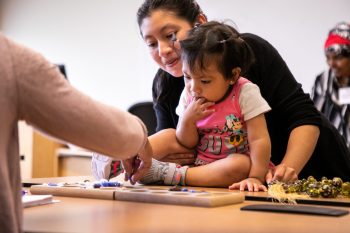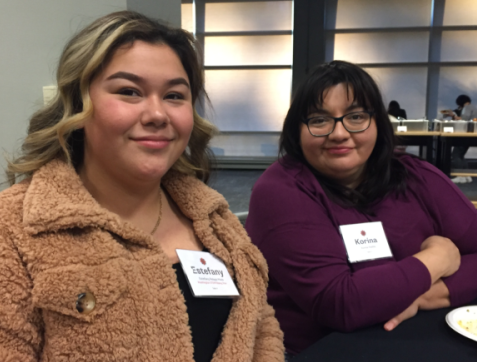“Why STEM?”: Maria’s Journey Through STEM Education

In Washington, only 64% of children enrolled in kindergarten are “math ready”, and without interventions, researchers say they will fall further behind each year.
But Washington STEM has a plan to turn this around by 2030.
Together with our 11 network partners across the state, we plan to triple the number of students of color, young women and students from low-income and rural families on track to earn high-demand credentials. By 2030, there will be 118,609 STEM jobs projected for Washington state that require a credential.
But the plan to prepare students for STEM careers doesn’t start in high school — it starts with story time and play.
Preschool: Early Math Identity
In 2023, Maria is only 3 years old, but her parents are using culturally appropriate books and techniques from Story Time STEAM in Action / en Acción to help her identify shapes and numbers and ask questions as she explores the world around her. Curiosity is a key component of “early math identity”— the belief that we all can do math, and that we all belong in mathematics.
Washington STEM is also working with partners across the state to develop an actionable plan to increase access to high quality child care and STEM learning by 2024. We will also advocate for more investment in the early learning workforce so caregivers and teachers remain diverse and earn a living wage.
K-12: Science Integration
Sample data (pre-pandemic) and observational data suggest that most elementary schoolers in Washington state have less than the recommended five hours of science education each week. To reach this level, Maria’s teachers are finding new and authentic ways to integrate science with reading and math learning. School projects that require observation and data analysis help Maria understand that science doesn’t just happen in labs—it is happening in the world around her, in ways that are important to her and her community. With integrated science education, Maria also has the chance to explore culturally relevant topics from her own community through a scientific lens. 
K-12: Diversifying STEM Teaching Workforce
All students benefit from having teachers from diverse backgrounds and this is doubly true for Black students, who historically have been disproportionately discouraged or excluded from STEM classes. Having just one same-race role model doubles a child’s chances of going to college. For Maria, she is taught all through elementary and middle school by STEM-savvy teachers and mentors who look like her, and some speak the language she speaks at home with her grandma. Maria knows she belongs in STEM. By 9th grade, she is ready to start thinking about what comes after high school, and she wants to know about financial aid, too.
Postsecondary Education: Well-lit Career Pathways
In her junior and senior high school years, Maria enrolls in dual credit classes to earn high school and college credits at the same time. This will not only save on future college tuition costs, but will also make it more likely that Maria will complete a two- or four-year college degree.

In the summer after high school graduation, Maria is busy in a career-connected internship. Thanks to Washington STEM’s cross-sector work that brings together employers, educators and vocational-technical schools and colleges, Maria identified an educational career track to match her interests in veterinary medicine—one that will lead to a rewarding STEM career that also provides a family-sustaining wage.
But for now, it’s summer. Maria has already been accepted to college and has a financial aid award letter in hand.
So when she’s not busy getting hands-on career experience with her internship, Maria is relaxing with friends. This is because Maria knows the importance of developing strong relationships—in the classroom and at home—which, you guessed it—research has shown will help her persevere in work, and in life.
In the world Washington STEM strives to create in partnership with communities across the state, the only limit for Maria is her curiosity.
—
*unless otherwise noted, these statistics come from forthcoming “STEM by the Numbers” report, due out May 2023.